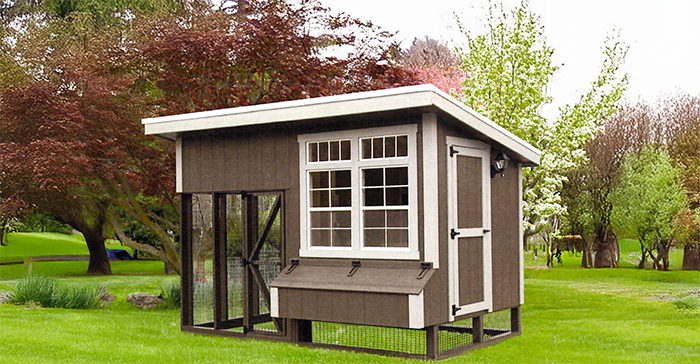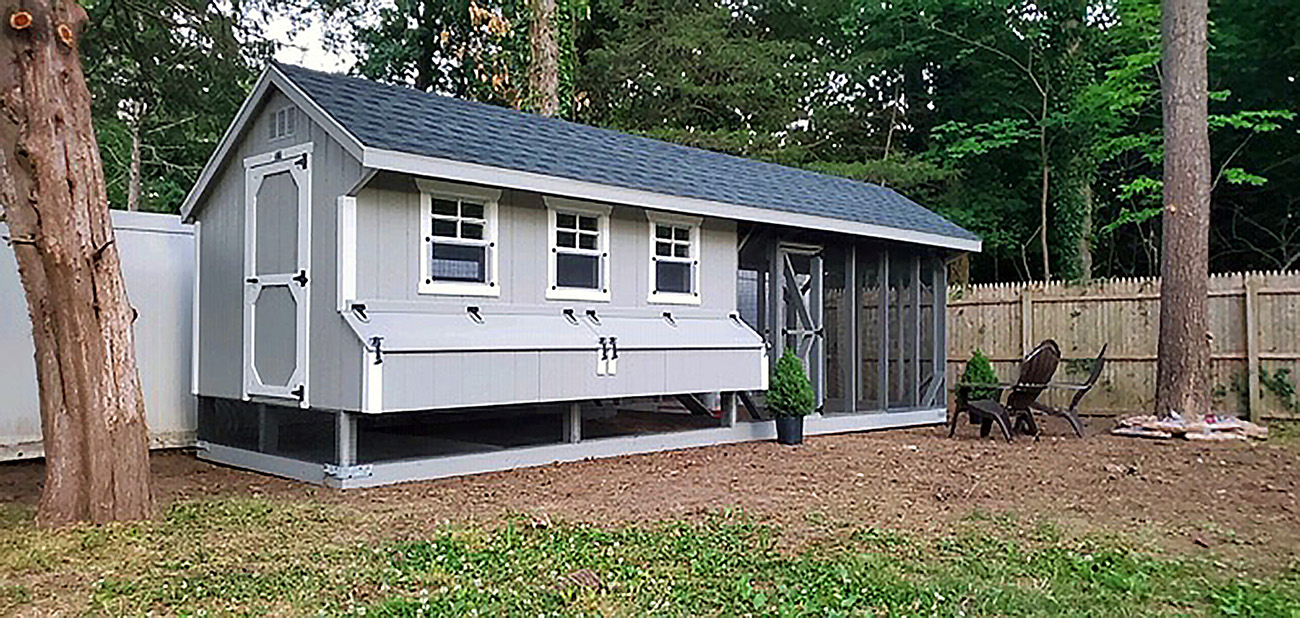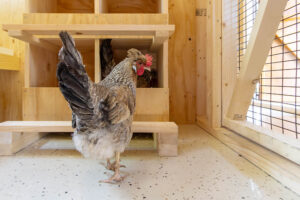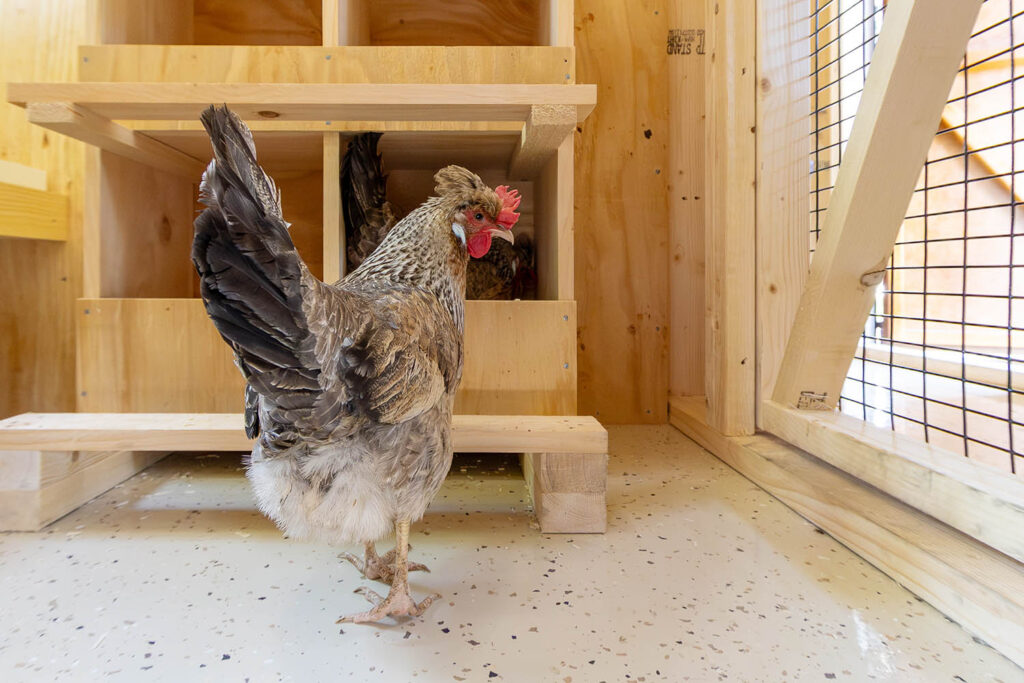A New Keeper’s Journey
Meet Sarah, a new homesteader in Texas who fell in love with the idea of farm-fresh eggs after seeing grocery store prices skyrocket. When egg prices hit record highs in early 2023, many Americans like Sarah started considering backyard chickens.
Sarah’s journey begins with six fluffy chicks peeping in a box and one big question: How big should my chicken coop be? Below, we follow Sarah’s story and learn how to determine the right coop size for a happy, healthy flock.
Starting Out: Dreaming of a Backyard Flock
Sarah’s adventure starts with excitement and a bit of overwhelm. She imagines a quaint coop in the yard and hens clucking contentedly. But as a first-time chicken keeper, she isn’t sure how much space her chickens will need. Early on, she almost buys a pre-made coop advertised for “6 chickens.” On closer inspection, it measures just 4 feet by 4 feet – only 16 square feet of floor space. Would that really be enough for six grown hens? Why coop size matters quickly becomes clear: cramped chickens can become stressed, unhealthy, and even aggressive. Sarah recalls reading that overcrowding is a top cause of pecking and bullying among hens. She’s determined to give her girls plenty of room.
Why Coop Size Matters: Chickens need personal space for their well-being. Too little room can lead to fights, feathers pecked out, and disease from unsanitary conditions. Adequate space keeps the peace and makes daily care easier on you, too. Sarah learns that a coop isn’t just a nighttime shelter – it’s the hens’ home base. Inside, they’ll sleep, lay eggs, and wait out bad weather. Outside, they need a safe run to stretch their legs. Balancing these indoor and outdoor areas is key to a successful setup.
Understanding Space Requirements (Indoor vs. Outdoor)
As Sarah researches, she discovers some general guidelines that many experienced keepers follow. A rule of thumb often cited in the chicken community is to provide roughly 3 to 4 square feet of floor space per chicken inside the coop, plus 8 to 10 square feet of space per chicken in an outdoor run. These numbers assume chickens will have daily outdoor time. Because Sarah plans to build a secure run and also let her hens roam the yard occasionally, these guidelines make sense for her flock.
Key Coop Size Guidelines: How much room do chickens need? Here are some important recommendations for new keepers:
- Indoor Coop Space: Provide 3–4 square feet per standard-size chicken inside the coop (floor space). This means, for example, a flock of five hens needs at least a 15–20 sq. ft. coop. More space is always welcome if you have it.
- Outdoor Run Space: If your chickens don’t free-range all day, aim for 8–10 square feet per chicken in the enclosed run or yard area. Room to roam keeps chickens active and happy.
- Large Breed Chickens: Got big breeds like Brahmas, Orpingtons, or Jersey Giants? Plan on extra space. Some experts suggest 8 sq. ft. inside and 15 sq. ft. in the run per heavy-breed chicken to accommodate their larger size.
- Roosts and Nesting: Ensure 8–12 inches of roost bar per bird for comfortable sleeping, and about one nest box per 4–5 hens so everyone has a spot to lay. These don’t heavily impact floor area, but you should account for feeder/waterer placement and walking space around them.
- If Chickens Stay Indoors Longer: In harsh winter climates or situations where chickens might be “cooped up” for days, provide extra space. A reputable guide suggests up to 10 sq. ft. per chicken in the coop if they’ll be confined for extended periods (e.g. during winter storms). This helps reduce stress when outdoor time is limited.
Sarah uses these guidelines to sketch out her coop plan. For her six chickens, she’s aiming for about 24 sq. ft. of indoor coop space (for example, a 6 ft by 4 ft coop) and a run of at least 60 sq. ft. (such as 10 ft by 6 ft). This is a bit more than the minimum – breathing room she knows they’ll appreciate.
Figure: A spacious backyard coop with an attached run provides both secure shelter and room to roam. The walk-in design makes it easy to clean and collect eggs. Ample mesh ventilation, elevated nesting boxes, and solid walls protect hens from weather and predators. A covered run like this lets chickens exercise outdoors every day, reducing boredom and bad behaviors.
“Chicken Math” – Plan for a Growing Flock
As spring arrives, Sarah visits the feed store “just to look” at chicks – and comes home with four more! Like many new chicken keepers, she’s become a victim of chicken math: the tongue-in-cheek term for how a planned flock of three can easily turn into 6, 10, or more. The truth is that chickens are addictive in the best way. You might start with a few and soon find yourself wanting a couple more breeds, or welcoming surprise chicks from a broody hen.
Fortunately, Sarah anticipated this. She’d heard seasoned keepers (and even TikTok homestead influencers) joke that “you always end up with more chickens than you planned.” In fact, chicken math is real, so it’s wise to build a coop larger than your initial need. Sarah’s coop design will comfortably house 6–8 hens, giving her a cushion for those extra additions. Planning ahead saves time and money in the long run – it’s easier to build or buy a slightly bigger coop now than to expand or start over later.

Leave Room for Expansion: When choosing a coop size, think about your future flock. If you think you want four chickens, consider a coop for six. If you have space, go a size up. This “expansion room” lets you integrate new birds more easily and prevents overcrowding if you do add a few down the line. It’s also handy in case a friend needs you to adopt an extra hen or two. Sarah, for example, built extra roosts and bought a feeder suited for 10 chickens, figuring it’s better to have room to grow.
Next up in Part 2 of “Choosing the Right Size Chicken Coop” we look at how climate considerations and predators factor into the equation.
In the meantime, CLICK HERE TO download our digital Coop Buying Guide and price list to begin planning YOUR Perfect Coop!















